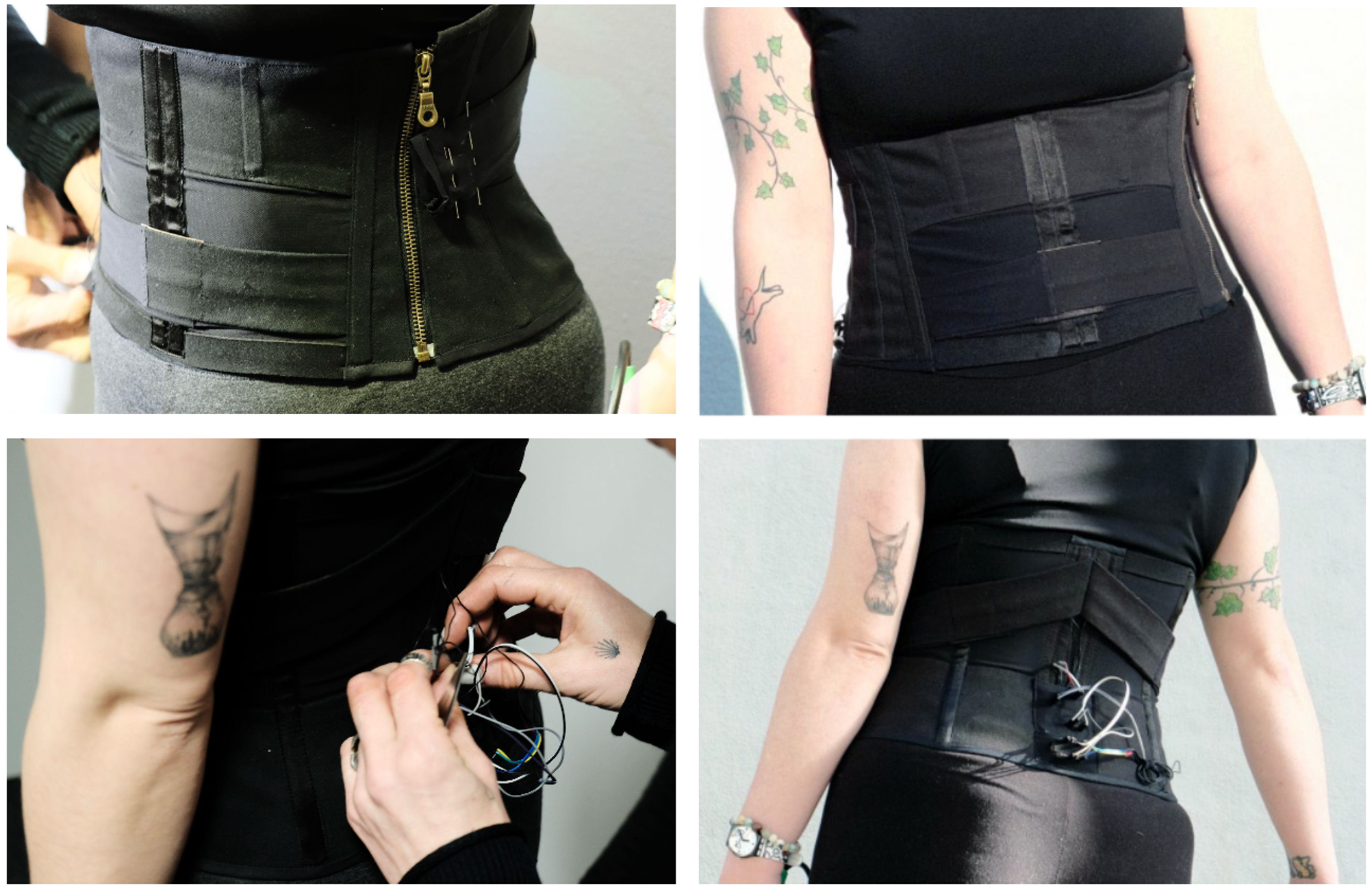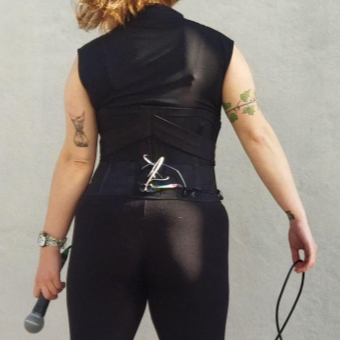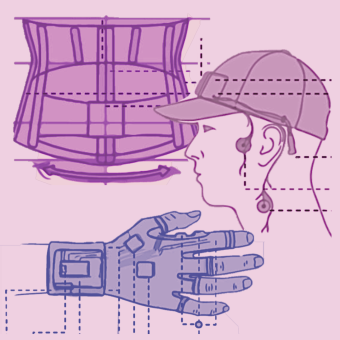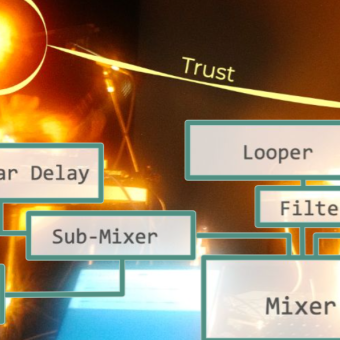ravenet
~
senSInt work on networks, control, agency, and liminal space in performance

2023 - present
This ongoing work, led by Dr. Paul Strohmeier and the Sensorimotor Interaction Group (senSInt) at the Max Planck Institute for Informatics (MPI-INF), is designing sensor-actuator networks between musicians in performance. The project has developed a series of instruments that use biosignal interaction to manipulate instruments - both own and others’ - to investigate themes of control, presence, and the blending of spaces in augmented performance.
Collaborators: Paul Strohmeier (senSInt, MPI-INF), Valentin Martinez-Missir (senSInt, MPI-INF), Rachel Freire (CiTIUS, University of Santiago de Compostela & MPI-INF)
abstract
RaveNET connects musicians through their biosignals and allows performers to manipulate performances through sensor-actuator networks. Networks of communication and control, albeit subtle and often directed internally between the performers, already exist in performance. Using biofeedback, these networks can become more overt and pronounced, allowing performers and audiences to understand the interconnectedness and liminal spaces — where the boundaries of interaction between musicians, instrumnets, and listeners become blurred — in collaborative music interaction.
RaveNET currently consists of three wearable controllers that function as nodes in the performance. Bones, an anti-corset for myself on vocals, uses capacitive sensing to detect stretch as the singer breathes. Tendons, a half-glove designed for Paul on bass, measures his galvanic skin response, pulse, and movement. Finally, Veins, a cap with electrodes for surface electromyography, captures Valentin’s facial expressions as he performs on drum machine. Interacting with signals in performance, we collaboratively reflect on our improvised performance: creative processes, spaces between our different bodies, our presence and control within the network, and how this makes us adapt our movements in order to be noticed and heard.

contributions
- RaveNET nodes — Bones, Tendons, and Veins designed and crafted by Rachel for instrument technique, individual bodies, and performance needs.
- Exploration of technology’s presence and impact in performance and reflection on adaptation to novel feedback.
- Design accounts from Bones and our Body Lutherie approach exploring tensions in vocal control and designing wearable for a changing body.



theory & methods
- eTextile sensing and biofeedback
- stretch shearing fabric sensors
- electromyography (EMG)
- galvanic skin response
- audio processing
- acceleration and gyroscopy
- agential realism
- vocal organology
- feminist design




